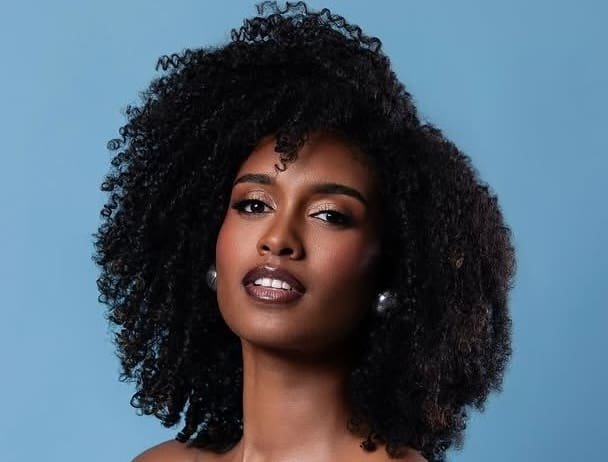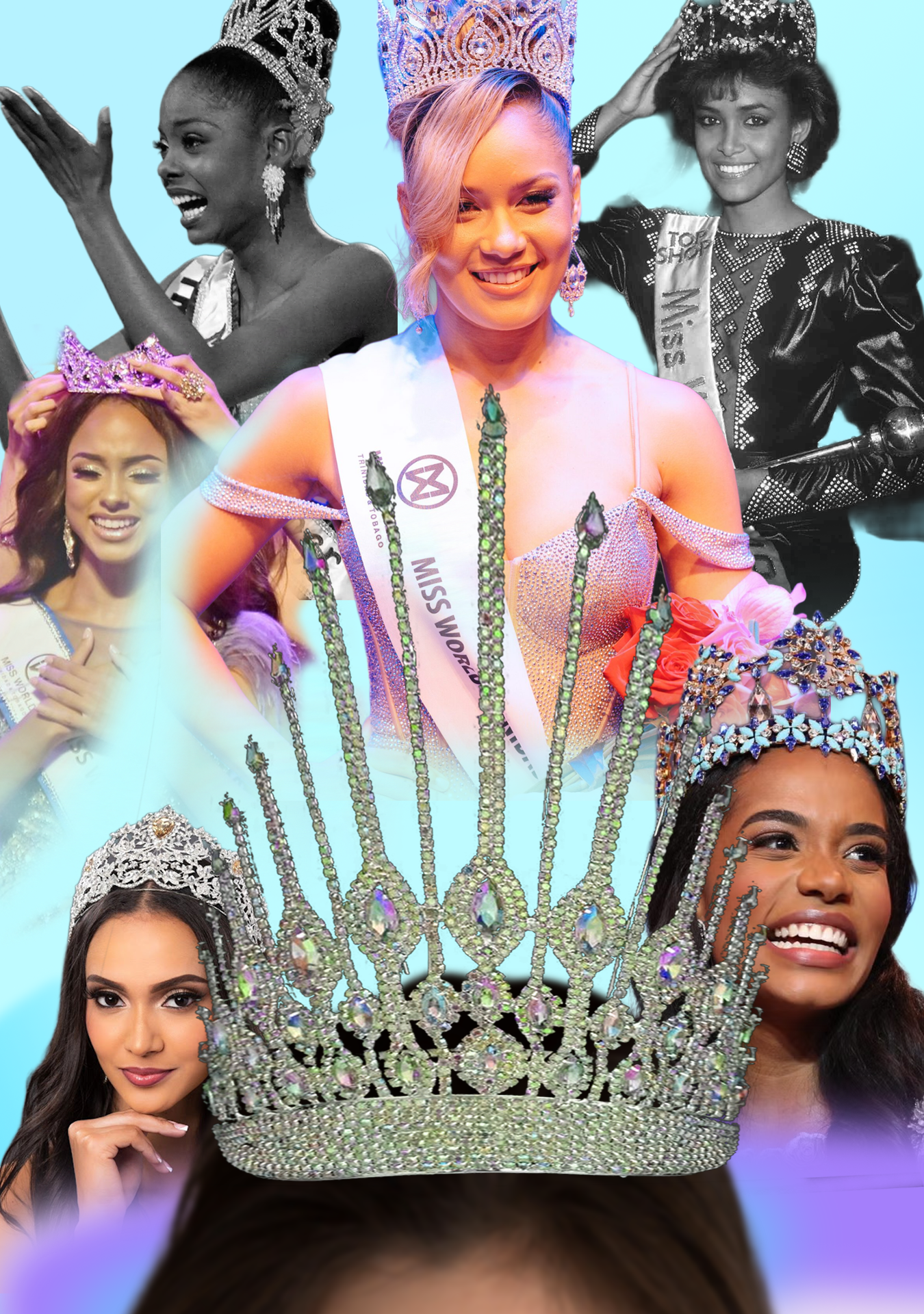WI of the Future Staff
Date: June 1, 2025

A celebratory moment for Martinique as Miss World 2025 representative, Axelle René, was crowned the winner of the Americas & Caribbean in the continental rounds. She represents the West Indies as one of the rare Caribbean islanders to place so highly in a competition where we’d on average claim the top 20.
A NEW ADVANTAGE FOR THE ‘THIRD WORLD’
In the competitive segments the West Indies had a relatively good year, with Axelle Rene clinching the Top Model title, excelling in the runway segment held at Aurika SkyCity Mumbai. But what really landed her in that top position in a rare instance of outshining the American candidate was her response to the question ‘Why should she be Miss World 2025?’. In her response she hit all the beats – the activism, the confidence, the elocution and the empathy – the world peace packaged with a luscious ethnic quote delivered with profound resonance and sincerity – she had the room, once sluggish with applause, burst into resounding clamours of praise.
Additionally, we see the Caribbean candidates excel in more moments this year where questions on advocacy for a better world are at the forefront: look, for example, how Anna-Lisa Nanton secured a win in the Head-to-Head Challenge of the newly implemented debate-style segment.
The previous year, the Caribbean landed in the top four as well, with Aché Abrahams making significant strides for Trinidad and Tobago as she dazzled in her viral speech at the The Head-to-Head Challenge in the Summit in Delhi. After which, she was honoured with the Miss World Caribbean title, recognizing her as the top contestant from the Caribbean region.
This compounded with Miss Jamaica taking the crown in 2019 with a standout Beauty with A Purpose Campaign, we see the trademark of the Caribbean’s stronghold at these pageants: activism.
The consciousness of being part of the Global South, and striking the emotional chords only those with the lived experience of a West Indian or indigenous background can deliver, has proven to give these contestants an upper hand in more recent years.
Pageantry has become less about beauty or fashion in recent years and more towards philanthropy.
The Pageant world has always enveloped many spaces in culture. It’s the model casting, Tyra Banks universe; it’s the film/TV world whose feminine portrayals are based on borrowed standards of attractiveness bestowed through ‘the ideal woman’ – who is intelligent, pure, talented; who is ambitious and of course magazine cover gorgeous; it is the artistic renaissance through splurges of homages to underrepresented communities. But most poignantly it has always been about fashion.

Fashion brands pay attention to pageants for markers of trends in color palettes, necklines, luxurious fabrics, intricate beadwork, body-conscious designs, poise-centric styling. and dramatic silhouettes. and accessory styling.
Many pristine members of the fashion & cosmetic world often indirectly offer packages to the models when they take the global stage. It’s the standout women that allow these fashion trends to be absorbed into the zeitgeist. Pageants in this sense have always been the pipeline. This bit has not changed.
WHAT HAS CHANGED
In more recent years, ideals and ideas for both gender and beauty have changed. Gender expressions & individualistic representations are expanding in an increasingly more media-tolerant light – in other words, what’s deemed acceptable now was obviously more condemned in older times. We know this. But for pageantry this is red alert.
Masculine-feminine trends
Size inclusivity
These are elements foreign to the concept of the divine feminine as portrayed by Pageant culture.
In this 21st Century, pageants are not the pioneers
Rather, cultural pressure, body positivity movements in the merger of influencer culture and self-made fashion brand norms began shifting the gears & in turn influencing pageantry:
- Fashion brands like Savage X Fenty, Aerie, and Dove began promoting diverse body types.
- Social media gave rise to plus-size influencers and models with huge followings, forcing traditional media and pageantry to reconsider outdated norms.
As a result:
- Pageants began relaxing size requirements and welcoming contestants of varying body types.
- Some national competitions and alternative pageants, like Miss Plus America and Miss Curvy, emerged as counter-cultural platforms, creating space for broader representation.
Today, the Pageant World is still adjusting… very, very slowly. It’s so slow that they’ve been predicted to fade away by critics, and new-gen fashion icons.
THE SPONSORSHIP STRUGGLE
Pageants feature an expensive exhibition of what had been a defining moment or accurate representation of modernity in the woman and in beauty. Their sponsors list would often reflect their grandness: name dropping multinational conglomerates at the midway of their segments. Now, they look to local sponsors and collaborations that no longer feature A-listers from the art, fashion or film/TV world.
Film & TV, especially, is parting ways from their longtime companion. Broadcasters are no longer jumping at the opportunity to air pageants (except for the really big ones like Miss World of Miss Universe, of course). Film/TV now amalgamize their own brand of the ideal woman from social media.
The decline of re-runs, media coverage and support for these events sparks rumours of a pending extinction.
Beauty for what purpose?
The Grandmother of fashion, has to scrounge for its place at the table. Don’t get us wrong – they’re still relevant, especially to the women coming from indigenous backgrounds and developing nations like the ones in the Caribbean. Its seat is simply no longer at the helm. In the dishing and in ‘the conversation’, it is served a much slimmer plate with its meal coated in a dressing sweeter than the main course – which took so long to catch flavour that it was served bland. Not because of a reluctance to adapt but by a component factor rooted in its conception. But here’s the dressing, the quick and easy flavour they can afford: charity and philanthropy.
Miss World, Miss Universe – now to stay afloat, must play the time-conscious role of Miss 21st Century. Pageantry is trying its slow hand at metamorphizing into something more complex and ostentatious by shedding its antiquated ideals. But to change these things is not enough to stay ahead of the curve. The international beauty pageant MUST become a proponent of change.
The first ever global ambassador for Miss World’s Beauty With A Change represents a full commitment to cultural shift. With less room for its more superficial elements (the looks and the forlorn Bikini section – that no doubt increased its viewership numbers), the relevance of pageants in fashion now rests on its speeches and charities, a shift that some may argue is contrived. But the question concerning the pageant’s existential crisis remains: is the pageant’s new focus enough to justify its existence?
Where the superficial elements sold and worked in the favour for the most commercial markets, fashion’s grandmother is now peeking into territory where its audience are the countries who benefit from the publicity the grand exhibition still allows rather than the lecherous men and vigilant fashion critics. The Met Gala holds more space for fashion criticism in a night than the months of build up that an event like Miss World has. It is more than apparent that the pageant has almost fully given itself to the less lucrative market.
But For Good Cause?
For this, nations who were previously underrepresented in the events can now take the reins. Thailand securing its first ever Miss World win to boot may be a case where candidates from underrepresented and historically marginalised countries now fit the mold of the pageant’s ideal woman much more conveniently. Representation & newness is the new seller of which the pageant is so clearly conscious. HOWEVER, it may be a case that there are some aspects that the pageant won’t bend on, for example, we’ve yet to see the pageant commit to its body positivity in its winning candidates. Neither have we seen a change in its preference for lighter complexions, straight hair and narrow features. It begs the question of whether this new shift has the bearings or the guts to commit to true inclusivity, not just at the podium but in show. And if it takes the leap, could this be its saving grace? And given Will the pageant finally take back its crown from the influencer, who has dominated the fashion world of sustainability and social statements?


Leave a Reply